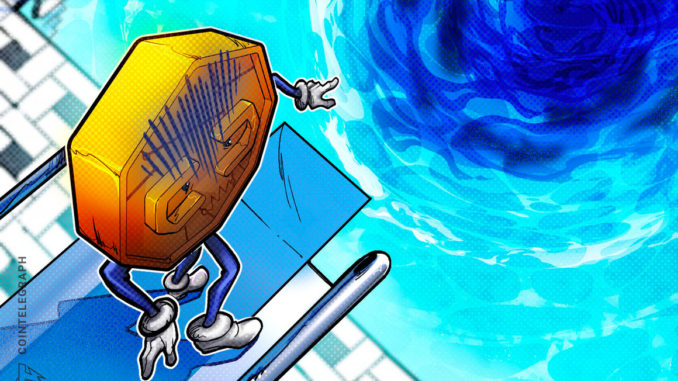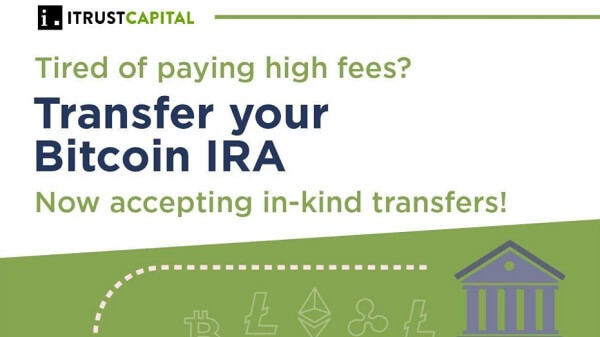
The recent downturn in the broader crypto landscape has highlighted several flaws inherent with proof-of-stake (PoS) networks and Web3 protocols. Mechanisms such as bonding/unbonding and lock-up periods were architecturally built into many PoS networks and liquidity pools with the intent of mitigating a total bank run and promoting decentralization. Yet, the inability to quickly withdraw funds has become a reason why many are losing money, including some of the most prominent crypto companies.
At their most fundamental level, PoS networks like Polkadot, Solana and the ill-fated Terra rely on validators that verify transactions while securing the blockchain by keeping it decentralized. Similarly, liquidity providers from various protocols offer liquidity across the network and improve each respective cryptocurrency’s velocity — i.e., the rate at which the tokens are exchanged across the crypto rail.
Download and purchase reports on the Cointelegraph Research Terminal.
In its soon-to-be-released report “Web3: The Next Form of the Internet,” Cointelegraph Research discusses the issues faced by decentralized finance (DeFi) in light of the current economic background and assesses how the market will develop.
The unstable stable
The Terra meltdown raised many questions about the sustainability of crypto lending protocols and, most importantly, the safety of the assets deposited by the platforms’ users. In particular, crypto lending protocol Anchor, the centerpiece of Terra’s ecosystem, struggled to handle the depeg of TerraUSD (UST), Terra’s algorithmic stablecoin. This resulted in users losing billions of dollars. Before the depeg, Anchor Protocol had more than $17 billion in total value locked. As of June 28, it stands at just under $1.8 million.
The assets deposited in Anchor have a three-week lock-up period. As a result, many users could not exit their LUNA — which has since been renamed Luna Classic (LUNC) — and UST positions at higher prices to mitigate their losses during the crash. As Anchor Protocol collapsed, its team decided to burn the locked-up deposits, raising the liquidity outflow from the Terra ecosystem to $30 billion, subsequently causing a 36% decrease in the total TVL on Ethereum.
While multiple factors led to Terra’s collapse — including UST withdrawals and volatile market conditions — it is clear that the inability to quickly remove funds from the platform represents a significant risk and entry barrier for some users.
Dropping the Celsius
The current bear market has already demonstrated that even curated investment decisions, carefully evaluated and made by the leading market players, are becoming akin to a gamble due to lock-up periods.
Unfortunately, even the most thought-out, calculated investments are not immune to shocks. The token stETH is minted by Lido when Ether (ETH) is staked on its platform and allows users access to a token backed 1:1 by Ether that they can continue using in DeFi while their ETH is staked. Lending protocol Celsius put up 409,000 stETH as collateral on Aave, another lending protocol, to borrow $303.84 million in stablecoins.
However, as stETH depegged from Ether and the price of ETH fell amid the market downturn, the value of the collateral started falling as well, which has raised suspicions that Celsius’ stETH has been liquidated and that the company is facing bankruptcy.
Given that there is 481,000 stETH available on Curve, the second-largest DeFi lending protocol, the liquidation of this position would subsequently cause extreme token price volatility and a further stETH depeg. Thus, lock-up periods for lending protocols act not only as an additional risk factor for an individual investor but can sometimes trigger an unpredictable chain of events that impact the broader DeFi market.
3AC in trouble
Three Arrows Capital is also at risk, with the ETH price decline reportedly leading to the liquidation of 212,000 ETH used as collateral for its $183 million debt in stablecoins and putting the venture fund on the brink of bankruptcy.
Moreover, the inability of lending protocols to negate the liquidations recently pushed Solend, the most prominent lending protocol on Solana, to intervene and propose taking over a whale’s wallet “so the liquidation can be executed OTC and avoid pushing Solana to its limits.” In particular, the liquidation of the $21-million position could cause cascading liquidations if the price of SOL were to drop too low. The initial vote was pushed through by another whale wallet, which contributed 95.1% of the total votes. Even though a second vote overturned this decision, the fact that the developers went against the core principles of decentralization, and revealed its lack thereof, alarmed many in the crypto community.
Ultimately, a lack of flexibility with bonding/unbonding and locked liquidity farming pools may deter future contributors from joining Web3 unless they have a strong understanding of DeFi design and commensurate risk. This is exacerbated by the collapse of “too big to fail” protocols like Terra and uncertainty around hybrid venture capital firms/hedge funds like Three Arrows Capital. It may be time to evaluate some alternative solutions to lock-up periods to allow for sustainable yields and true mass adoption.
This article is for information purposes only and represents neither investment advice nor an investment analysis or an invitation to buy or sell financial instruments. Specifically, the document does not serve as a substitute for individual investment or other advice.





 Bitcoin
Bitcoin  Ethereum
Ethereum  Tether
Tether  XRP
XRP  USDC
USDC  TRON
TRON  Lido Staked Ether
Lido Staked Ether  Dogecoin
Dogecoin  Figure Heloc
Figure Heloc
Be the first to comment